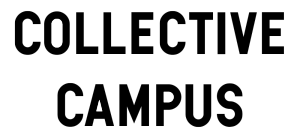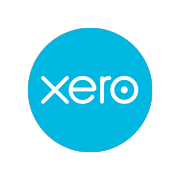We gathered this month to talk about innovation at large companies. What makes it hard to keep innovation happening? What options do you have to encourage it at a large organisations? We finished with some good news stories as well.
Our panel for the evening have large company experience at Sensis, Tatts, Victorian Government, AFL, Lonely Planet & others. We’d like to thank Jamie Skella, Andrew Niere and Mark Andrew for sharing their experiences & knowledge.
More thanks go to our facilitator of the evening, Daniel Kinal, whose passion for the topic got him the gig! Thank you to our host for the evening – Nintex.
I have tried to capture the spirit of the evening and give credit where credit is due. I may have missed some so … the words were said by someone at some point of the evening….
#ProdAnon Innovation in large companies kicking off here at Nintex. @product_anon pic.twitter.com/RtXHhmrW0c
— Rebecca Jackson (@_rebeccajackson) June 18, 2015
We opened with the “worst” experience the panel had had in their innovation careers ….
Jamie: Tatts Group spent years and many millions creating a one-stop websites and apps, combining lotteries and wagering products. Ultimately that didn’t actually make a lot of sense because of the varied customer base, so it is now being undone at additional cost.
Mark: Got an innovation hub up and running at Telstra to build the first online call centre technology. They had good UX engagement and endorsement from senior leadership. Turns out having so much good support can be an issue because many people wanted to get involved and Mark spent most of his time fending them off. Multiple vendors/consultants could all “help” but had different approaches to UCD + innovation so there was constant conflict between them.
Andrew: Gave an example from his first day of work to give us an idea of what the environment is like in government. While using his work email, he tried to search for an email but could only use subject and sender criteria to search. Very limiting! He then noticed an index option within the application so he rang IT and asked them why that hadn’t been enabled. They said it would add size to the files + why would anyone want to search their email?
Andrew also shared a story to highlight the opportunity that exists for innovation but needing to work in the existing system. They needed iPads in order to to test software. To get those iPads, they had to download a form which had to be sent by fax. While they could do cool new things for their customers, process was still stuck in the past.
We’re all here, probably, because we believe that that innovation is important to larger organisations. How important is it really? Is it important in its own right? Or is it more just a function of trying to stay relevant in a dynamic marketplace?
Mark: Preventing innovation comes from the top down. If you stop ideas it breeds a nasty culture and sub-culture of staff trying to work around it. Inclusion in the company creates empowerment and encouragement to share ideas and fostering them is really important for building that positive environment.
Jamie: Someone talked about having an “innovation unit” at one organisation but Jamie’s approach was to set up open sessions were anyone could come along and offer up ideas. However, his experience at the organisation was all started well but if actions don’t follow through to show innovation is truly supported by actually progressing ideas – things stall.
Mark: Has seen great initiatives at companies that have hack days but often those ideas don’t get a chance beyond those days. The moment for creation is short lived unless you do “things” to encourage continuation.
Companies inherently don’t like failure and yet at its heart many of this work requires embracing failure and knowing you tried something and it won’t work (for now).
Andrew – had a great example of a fabulous innovation that failed – perhaps because it was ahead of its time but also the process ended up bogging it down and killing it. Ultranet was an education innovation with really great experts involved in the work so it had great content and intentions – plus millions of dollars of funding behind it. But the procurement process of government killed it because this system that normally builds roads & hospitals had a long process. By the time you had found people to do the work, the idea was dead.
Everyone is busy with “business as usual”, if you don’t make space for things above BAU then new ideas will stall.
Andrew: if it takes 5 years to get something to “market” then it is no longer fit for purpose by the time you deliver.
How to you stop discouraging innovation?
Mark: Sometimes you have to move people out of the organisation to create the change. If they are the ones holding on to a process or governance that is preventing new ideas then it isn’t always about altering the process, you have to change the people.
Jamie: Had a product council and you could get great ideas submitted and then reviewed by the council but BAU would keep getting in the way. The ideas would constantly be pushed down in preference to continuing with BAU activities. This action started to kill the ideas because nothing got through.
Andrew: Sometimes you have to keep your head down and just do it without asking first. A particular initiative with cystic fibrosis patients and telehealth got off the ground by a entrepreneur clinician who just tried it, had connections and pushed it through. Even though something has been proved, there is still the issue and concern that bringing it back into the larger organisation won’t work because the traditional bureaucracy will pull you under again and kill the initiative.
Mark: This is where you get skunkworks and underground teams and groups and that sounds cool, but it can also be destructive.
Andrew: We wanted to give our volunteers iPads to do data entry on location. This would save precious time as they would not have to collect and enter information from paper forms. When this approach was found out by the IT guy, he became all stressed about having to support the iPads. This one person could block innovation for many.
“nothing kills innovation faster than the IT department”.
Question from the audience: Is a skunkworks approach better?
Jamie: at Tatts Online, the innovation can also be killed by those who are most afraid of change for themselves, and thus the only way to get something done was to be a separate group/team and run independently of everyone else. We need to get digital or else, but at the same time “this will kill us” because their seemed as if there would be conflict between the online site and the retail outlets would hurt retail. Of course if the company didn’t go online someone else would grab the spot and kill both. Seems obvious but the only way sometimes to be innovative is to keep it small and separate from the larger org and the culture (of resistance).
Mark: Don’t ask for permission. You hear this said a lot, but what does it actually mean and how do you use it well?
#prodanon “if we’d continuously improved the candle we wouldn’t have the lightbulb” don’t get stuck in the continuous improvement loop. — Rebecca Jackson (@_rebeccajackson) June 18, 2015
Andrew: Test what works best – perhaps you should have a crack team that is breaking all the rules and then helping push out change. Once you try to embed that it can get ignored or you have a champion in each team and help move things along across an organisation as a more embedded approach.
Jamie: Believes company growth can stifle innovations because as you get size you get process, structure and silos. Culture is easy to hold and cultivate at 20-30 and then becomes a thing you have to be very conscious of as you get larger.
He called out the example of Basecamp who have made a conscious choice to NOT grow. They are making money, maybe not the out of control money making that others go after. They want to keep the culture they have, which they find manageable with the number of people they have to today and thus are satisfied with what they can do at that size. They can stay focused on building the products they want for the community/customers they have and any new customers that join, have to sign up for that as well.
Continuous improvement is not true innovation and in some ways once you set yourself up for that i.e. embed a great agile process, then you are laying a foundation for status quo over an innovation culture.
Question from the audience: what is innovation exactly in your mind?
Jamie: Finding an edge not easily copied.
Mark: without precedent
Andrew: New way to do business, new way to do process, new ways of doing things.
Last one: What is your best innovation experience?
Jamie: His most recent was working toward getting buy-in and the ball rolling for virtual reality (stereoscopic 360 degree video) initiatives at the AFL. It was initially met with lukewarm reception, but after buying and demonstrating the hardware, it gained traction. He’s no longer at the AFL, but has left the company in a great position, who are continuing with VR opportunity exploration and real experiments, which should keep them ahead of local competition.
Mark: Loved his time at Lonely Planet when they built an iPad app for the inaugural launch of the iPad. They got it done in 6 weeks and built a beautiful product in that time frame.
Andrew: (I can’t remember! Andrew, please remind me of your story!)
Daniel: is loving what Microsoft are doing lately. By bringing in a new CEO, they have change happening and have instigated a new era instead of being one of the behemoths that you might predict are stuck.
Thanks again to our panelists and facilitator for such a great conversation.
Thank you to Nintex for hosting us and I look forward to you joining us for our July session on how to work better with your Sales teams.



